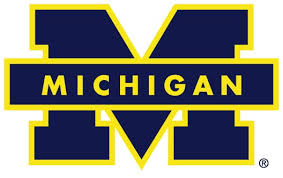A In-Vivo Esophageal Protocol for Detection of Neoplasia in the Digestive Tract
| Status: | Completed |
|---|---|
| Conditions: | Gastrointestinal |
| Therapuetic Areas: | Gastroenterology |
| Healthy: | No |
| Age Range: | 18 - 100 |
| Updated: | 4/21/2016 |
| Start Date: | July 2012 |
| End Date: | September 2013 |
A Phase 1B In-Vivo Esophageal Protocol for Detection of Neoplasia in the Digestive Tract
You are invited to participate in a research study to develop new ways to look for abnormal
areas/tissues of the esophagus. The current endoscopes used to look at the esophagus are
very good, but if the area doesn't look different to the naked eye, then the endoscope can't
improve on that. The investigators are looking at using special fluorescent stains in
addition to special endoscopes designed to see abnormal areas that are not obvious to the
naked eye. Currently specialized microscopes and fluorescent stains are used in clinical
laboratories but it takes several days of processing to get results. It may be very helpful
to look for areas to sample for abnormal tissue during the endoscopy procedure.
You are being asked to let us use "fluorescent peptides" with a special endoscope that allow
us to "see" your esophagus with both fluorescent and white light during your upper GI
endoscopy procedure to help target your biopsies. Peptides are small chains of amino acids
(the building blocks that make up proteins) linked together. Our peptide is a chain of 7
amino acids attached to a fluorescent dye called FITC (like the one used by your eye
doctor).
The investigators have prepared special "fluorescent peptides", that will "glow" when a
special light is used that should help us separate normal tissue from abnormal tissue. In
this study, the investigators will apply the special fluorescent peptides by a spray
catheter to your esophagus to help us target you biopsies. Both routine and targeted
biopsies will be taken as your endoscopist feels is indicated.
This is a phase 1b study. This means that although the investigators have applied the
peptide to 25 people in our first research study, the investigators still need to learn more
about "fluorescent peptide" in people. The Food and Drug Administration (FDA) has not
approved this agent, but is allowing us to test it in this study. The main goal of this
study is to see if the peptide "glows" well and if the investigators can take pictures of
the areas that do glow.
This is a research study of the peptide and our ability to see it "light up or fluoresce".
Being in this study and applying this peptide won't change how your biopsies are taken nor
how your endoscopy is done.
areas/tissues of the esophagus. The current endoscopes used to look at the esophagus are
very good, but if the area doesn't look different to the naked eye, then the endoscope can't
improve on that. The investigators are looking at using special fluorescent stains in
addition to special endoscopes designed to see abnormal areas that are not obvious to the
naked eye. Currently specialized microscopes and fluorescent stains are used in clinical
laboratories but it takes several days of processing to get results. It may be very helpful
to look for areas to sample for abnormal tissue during the endoscopy procedure.
You are being asked to let us use "fluorescent peptides" with a special endoscope that allow
us to "see" your esophagus with both fluorescent and white light during your upper GI
endoscopy procedure to help target your biopsies. Peptides are small chains of amino acids
(the building blocks that make up proteins) linked together. Our peptide is a chain of 7
amino acids attached to a fluorescent dye called FITC (like the one used by your eye
doctor).
The investigators have prepared special "fluorescent peptides", that will "glow" when a
special light is used that should help us separate normal tissue from abnormal tissue. In
this study, the investigators will apply the special fluorescent peptides by a spray
catheter to your esophagus to help us target you biopsies. Both routine and targeted
biopsies will be taken as your endoscopist feels is indicated.
This is a phase 1b study. This means that although the investigators have applied the
peptide to 25 people in our first research study, the investigators still need to learn more
about "fluorescent peptide" in people. The Food and Drug Administration (FDA) has not
approved this agent, but is allowing us to test it in this study. The main goal of this
study is to see if the peptide "glows" well and if the investigators can take pictures of
the areas that do glow.
This is a research study of the peptide and our ability to see it "light up or fluoresce".
Being in this study and applying this peptide won't change how your biopsies are taken nor
how your endoscopy is done.
Inclusion Criteria:
- Subjects with Barrett's Esophagus or esophageal adenocarcinoma with or without
confirmed Barrett's Esophagus
- Subjects who are scheduled for a clinically-indicated upper endoscopic evaluation
and/or intervention (e.g. esophagogastroduodenoscopy (EGD) with biopsies)
- All subjects who are medically cleared for the procedure (e.g. washout for
anticoagulants, co-morbidities) who meet the inclusion/exclusion will be included.
Standard practice guidelines for safely proceeding with the procedure will be
sufficient for our study
- Adults aged 18 years to 100
- Willing and able to sign informed consent
Exclusion Criteria:
- Subjects with known allergy or negative reaction to fluorescein or derivatives
- Subjects who have had an esophagectomy
- Subjects who are also prepped for colonoscopy with the EGD
- Subjects on active chemotherapy or radiation treatment
We found this trial at
1
site
University of Michigan The University of Michigan was founded in 1817 as one of the...
Click here to add this to my saved trials
